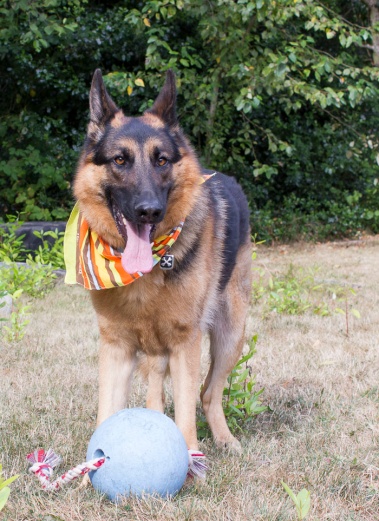While in Atlanta for BarkWorld, I missed my doggies like crazy. More than usual, probably because I was thinking about dogs and surrounded by dog-lovers all weekend.
The highlight of the social “petworking” conference for me was meeting Victoria Stilwell. As a fan of her television show, I already knew that she is a champion of positive reinforcement training, but I did not realize the depth of her passion for educating dog owners and old-school trainers that force-free methods are the only humane way to work with animals. Her talk at BarkWorld was inspirational.
On the flight home, I began reading her book, Train Your Dog Positively, appreciating its well-written, scientifically backed explanation of dog psychology mixed with anecdotes about her own dogs and client dogs.
On page 51, I had to nudge Rob to take off his earphones and listen to this:
When we pet a dog lovingly, for example, the warmth and happiness we feel comes from a release into the bloodstream of oxytocin — a “bonding” hormone that has a powerful effect on dogs and humans. Dr. Kerstin Uvnas-Moberg, a doctor and professor of physiology and a pioneer in the study of oxytocin, studied this hormone release by taking blood samples from dogs and their owners before and during a petting session. When owners stroked their dogs, they had a release of oxytocin similar to what mothers experience while nursing babies.
Interestingly, petting also triggered a burst of oxytocin in the dogs themselves. Miho Nagasawah, of the Department of Animal Science and Biotechnology at Azabu University in Japan, showed that even eye contact between a dog and human causes an increase in oxytocin. This interaction between our two species has a powerful physiological effect on both of us, promoting feelings of love and attachment while lowering blood pressure and heart rate, soothing pain, and lessening stress.
Oh my god, yes. Forget eye contact, I feel releases of oxytocin just by saying my dogs’ names.
Here’s a scenario that played out in about a dozen variations throughout the weekend: Rob would mention one of the dogs, let’s say Mia. I would moan, “Meeeeeeyaa. I miss her so muuuuch.” Then I might chant her name, “Mia, Mia, Mia,” or sing the song Rob made up about her resemblance to a bear, then autotuned and used as the soundtrack to this montage of photos:
The Leo version often included some form of his nickname: Leo Bug or DJ Leo Bug, which I then abbreviated to DJ LB, realizing that LB also stands for Little Boy. Little Boy Leo Bug.
I know. I’m completely insane.
But saying their names, thinking about them, looking at their pictures in my Facebook albums — all of these fill me with a warmth and happiness reminiscent of petting them and kissing their soft heads.
Naturally since we’ve been home, I’ve been on an oxytocin bender. Every time I leave the house, I look forward to my next opportunity to revel in our scientifically proven bonding ritual.
Our dog sitters (Grandma and Grandpa) reported that Mia seemed anxious while we were gone, but Leo was his normal self. Maybe he wasn’t distraught by our absence, but I can tell by the smile on his face that he’s sure happy we’re back.

One thought on “Separation anxiety (mine) and the canine oxytocin connection”
Comments are closed.